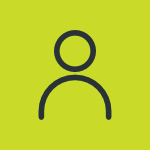According to the “India Employment Report 2024” released by ILO and IHD, 80% of India’s unemployed population comprises young individuals. The ILO projects the national unemployment rate for 2023 to stand at 5.1%.
The report “India Employment Report 2024,” jointly released by the ILO and the IHD, highlights a troubling trend: youth unemployment. Over 80% of India’s unemployed workforce falls under the youth category.
The current unemployment rate in India, according to the International Labour Organization (ILO), is 2.1% for males and 2.3% for females. These figures reflect the ILO estimates for the total labour force in India.
This issue is further compounded by the fact that a significant portion (around 65.7% in 2022) have secondary education or higher. This indicates a growing mismatch between skills and job demands.
The report reveals a worrying trend:
- Youth unemployment rate more than doubled between 2000 and 2019 (from 5.7% to 17.5%). While the pandemic years saw a decline (12.4% in 2022), the situation remains precarious. Graduate unemployment is particularly concerning, impacting women disproportionately.
- Gender Disparity: The report exposes a stark gender gap. In 2022, nearly five times more young women (48.4%) were not in employment, education, or training compared to men (9.8%). This highlights the need for targeted policies to enhance female labour force participation.
- Informal Sector Reliance: Another key takeaway is the dominance of the informal sector. A vast majority of jobs in India are informal, offering limited social security and career progression. This lack of formal employment opportunities further complicates the unemployment picture.
Also read: Adani’s copper unit in Mundra begins operations, to generate 7,000 jobs
- Labour Market Dynamics: Despite recent improvements in labour force participation and employment rates, challenges persist, especially in the non-farm sector’s ability to absorb workers effectively.
The ILO has outlined several key recommendations to address unemployment in India, focusing on five main policy areas:
- Boosting productive non-farm employment: Encouraging growth in sectors like manufacturing can generate a higher number of formal jobs.
- Promoting decent work in Micro, Small and Medium Enterprises (MSMEs): Supporting MSMEs through access to credit, skilling initiatives, and streamlining regulations can create more employment opportunities.
- Investing in infrastructure: Public and private investments in infrastructure can create jobs in construction and related sectors.
- Strengthening labour market regulations: This can ensure minimum wages, safe working conditions, and social security benefits for workers in both the formal and informal sectors.
- Promoting formalisation of the informal economy: Providing incentives and streamlining processes for informal businesses to transition to the formal sector can improve job quality and worker protections
- Bridging the gender gap: Policies like affordable childcare facilities, flexible work arrangements, and tackling workplace discrimination can encourage increased female labour force participation.
- Addressing regional disparities: Tailored policies are needed to address unemployment issues specific to different regions in India.
- Skilling initiatives aligned with industry needs: Reforming education and training programs to equip the workforce with relevant skills for in-demand jobs is crucial.
- Active labor market programs: This includes providing career counselling, job placement services, and unemployment benefits to facilitate job seekers’ re-entry into the workforce.
- Expanding social protection schemes: Extending social security benefits like unemployment insurance and healthcare access can provide a safety net for job seekers and vulnerable workers.
High unemployment rates in India cast a long shadow, impacting individuals, society, and the overall economy. The consequences are:
- Financial Strain: Joblessness translates to a loss of income, leading to financial hardship for individuals and their families. This can impact basic necessities like food, housing, and healthcare.
- Reduced Standard of Living: Unemployment can significantly decrease a person’s standard of living, forcing them to cut back on expenses and potentially leading to debt.
- Loss of Skills: Long-term unemployment can lead to a decline in skills and experience, making it harder to re-enter the workforce.
- Increased Poverty: High unemployment rates can exacerbate poverty, creating a vicious cycle where joblessness leads to a decline in living standards, making it harder to afford basic needs and education, further hindering future job prospects.
- Social Unrest: Frustration and desperation stemming from unemployment can contribute to social unrest and crime.
- The strain on Public Services: Increased dependence on social welfare programs due to unemployment can put a strain on government resources.
- Lower Productivity: When a significant portion of the workforce is unemployed, the overall productivity of the economy suffers. This can lead to slower economic growth.
- Reduced Consumption: With job losses comes a decrease in consumer spending, impacting businesses and further hindering economic activity.
- Underutilization of Resources: A large pool of unemployed individuals represents a waste of human capital and potential economic growth.
Stay connected with us on social media platforms for instant updates click here to join our LinkedIn, Twitter & Facebook



































